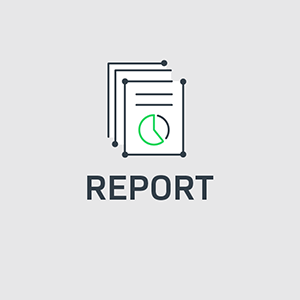Software producers and device manufacturers are looking for new ways to drive revenue as competition heats-up across the global technology stage. As a result they’re introducing more software licensing options than ever before as they now have a variety of ways to monetize their products via software licensing solutions. The constant change can lead to complexity which can lead to confusion with the many licensing terms out there.
A few years ago we posted a “Common License Types and Terms” blog that thousands have viewed. We’ve updated the content and have re-posted as we’ve had customers continue to ask us to help them make sense of all the software license types and terms in the marketplace. Note that these terms are Flexera definitions and may differ from definitions provided by other software companies (e.g. CRM, ERP systems).
This post will cover some of the more common software license terms while a subsequent post will cover common software license types.
Software License Terms
- Activation (aka Product Activation): Structured process for fulfilling a license right.
- Asset: Anything that has value that users own and/or have the right to use. Includes entitlements and hardware.
- Certificate: License right expressed as one or more license lines.
- Client Access Licensing (see “Indirect Usage”)
- Deactivation: Structured process for returning a license right.
- Dongle: Hardware (typically the size of a thumb drive) that enables access to software per the software license agreement.
- Electronic Software Delivery: (aka Electronic Fulfillment) Delivering an initial software download and subsequent software updates via electronic means as opposed to physically shipping hard media such as DVD’s. Software updates are a component of electronic software distribution.
- End-User License Agreement (EULA) (see “Software License Agreement”)
- Entitlement: An entitlement represents the end-user’s rights to use the software, access maintenance, use training and more. The rights include who and how long users can use the product(s). Once the user acquires these rights it is their choice to activate them, which generates a license to use the actual software.
- Entitlement Lifecycle: Refers to the series of activities related to managing entitlements, from initial creation and activation through upgrading, renewing and revoking.
- Entitlement Management: Encompasses all activities relating to the entitlement lifecycle (see above) including tracking and administering user rights to the product(s) and the activation-related data.
- Export Compliance: Regulations issued by governing bodies from various countries (i.e. U.S. Department of Compliance Bureau of Industry and Security) that ensure companies comply with export control policies to ensure intellectual property doesn’t fall into the wrong hands and is encrypted at an appropriate level.
- Indirect Usage: Indirect usage (sometimes referred to as client access licensing) happens when front-end applications communicate with other back-end applications transparent to the user. For example, when an employee interacts with their intranet site, they may be using an infrastructure application like Microsoft SharePoint on the back-end which may require a license for every user who accesses the company’s intranet.
- License: An instantiation of an entitlement (see also “Software License“).
- License Borrowing: Allows for users to access software when offline. Users “borrow” from the license host server for a limited time, disconnect from the network and use the borrowed license without being connected to the license server.
- Licensing Lifecycle: Refers to the series of activities related to licensing, from the initial creation (license activation) to the changes that occur over the life of the license as events occur (e.g. license re-hosting, extending, version upgrades).
- Meter: What’s being measured to identify usage. Examples include: a particular function (on/off), number of CPUs or cores, number of megabytes of data processed or stored, number of compilations, number of CPU cycles used for a simulation, number of users using the application at the same time (concurrent user).
- Quote to Cash: (aka Prospect to Support): Process covering the integration and automation of end-to-end business processes on the sell side that includes pricing, quote creation, contract & order management, invoicing & payment processing.
- Software License: Legally binding agreement that specifies the terms of use for an application and defines the rights of the software producer and of the end-user.
- Software License Agreement (SLA): Contract between the software producer “producer” and the end-customer “user.”
- Software Monetization: Making money from (monetizing) software directly (licensing, up-sells/cross-sells, renewals) and indirectly (capturing usage data, electronic software delivery and updates).
- Token: Device or mechanism that’s used to authorize the use of software.
- Trusted Storage: Technology necessary to implement deactivation.
- Usage: Meter that identifies how much of the software is being used (i.e. megabytes consumed).
- Virtual Appliance: Pre-built software solutions comprising one or more virtual machines that are packaged, updated, maintained and managed as a unit. Software developers create virtual appliances by developing self-contained and optimized application stacks that are customized for their workload and embedded with an operating system (OS) of choice. Note: A virtual appliance functions much like a virtual machine, however, it contains a preinstalled, preconfigured OS and an application stack that is optimized to provide a specific set of services.
- Virtual Machine: Software container created to run on virtualized platforms. It has four key virtualized resources (CPU, RAM, storage and networking). It requires the installation of an OS and runs one or more applications.
We hope this helps – let us know if there are any other terms you’d like to see! Next up: we’ll cover the more common software licensing types – stay tuned!


